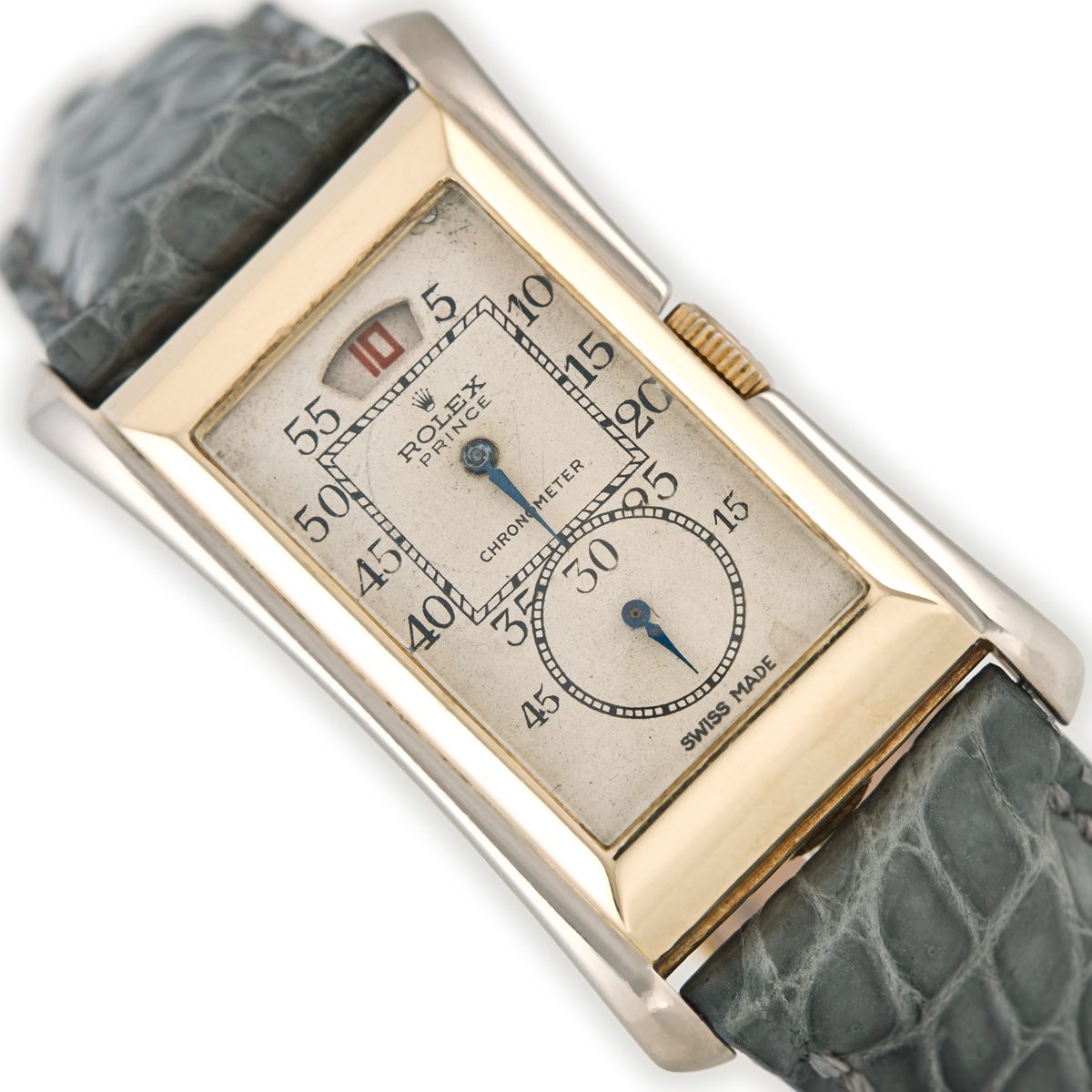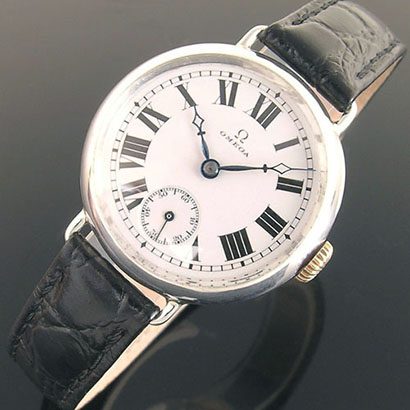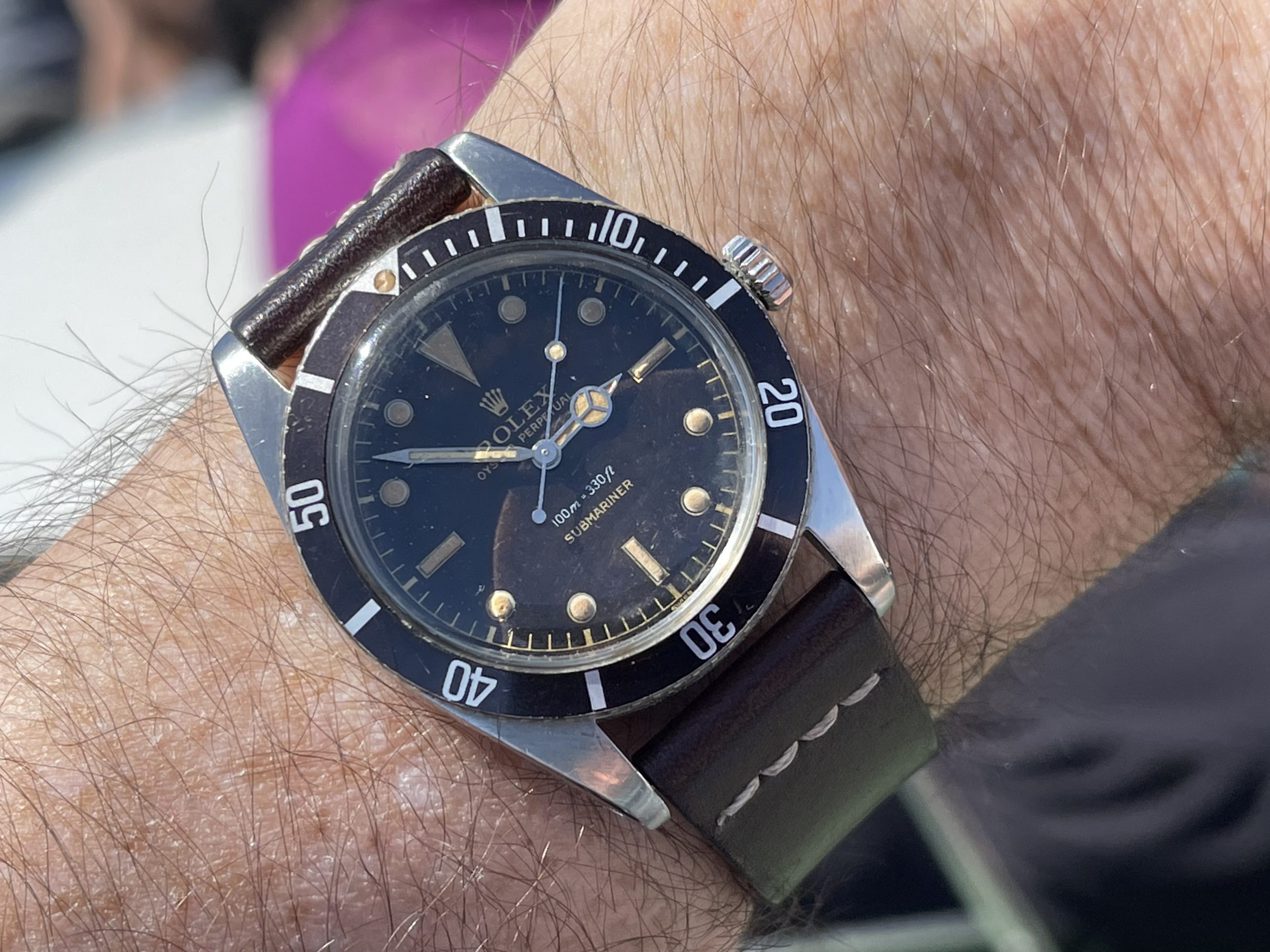CHRONOMETER VS CHRONOGRAPH:
UNDERSTANDING PRECISION AND PERFORMANCE
We are often asked by clients to explain the difference between chronometers and chronographs. These commonly confused horological terms sound similar but actually refer to very different aspects of a watch’s precision and performance.
If you’re new to the world of horology you may be using these terms incorrectly thinking that they are related terms, or maybe are not familiar with them at all. They both have the same prefix “chrono” meaning “time”, so they can be easily mixed up, but each of these terms has its own unique meaning.
Here, we set the record straight, giving you a clear definition of both chronographs and chronometers and explaining why they are important features to understand.
The first thing to know is that a chronometer rating gauges the accuracy of a watch and guarantees that the watch meets the specific high standards needed to receive a chronometer rating. The independent testing, carried out by an official organisation, analyses the movement under strictly defined rules. It has nothing to do with the functions of a watch and everything to do with performance and accuracy.
A chronograph, on the other hand, refers to a function within a watch, something it is capable of doing, or more specifically in horological language; a complication. As a reminder, a complication is any feature in a mechanical watch beyond the simple display of hours, minutes or seconds – in this perspective, even the simplest date mechanism is a complication.

Understanding Chronometers
The term chronometer is a rating of accuracy. A watch referred to as a chronometer, or that has a chronometer certification, is a watch that has passed a variety of precision tests and is proven to be highly accurate. Only the most accurate and well-made timepieces meet this exacting standard with 6% of all Swiss watches that are exported for sale receiving a chronometer rating, according to the COSC.
It’s worth going back to basics for a moment to understand what prompted the need for a chronometer rating to be established in the first place. Time is based on agreed fixed and precise calculations and therefore is accurate and never changes. Mechanical watches are, like all mechanical things, relying on moving parts, be it a car engine or vintage Rolex, subject to the effects of internal and external forces that impact their accuracy.
The movement in a mechanical watch is a piece of micro-mechanics. Friction is one example of an internal force that affects accuracy. Friction will increase over time as oils degrade and the moving parts become subject to wear. Just like the engine of a car, its performance will, necessarily, decline over time. A movement is also subject to external factors, like humidity, pressure, magnetism, heat/cold or gravity. As it is a mechanical engine it will never be able to offer 100% accurate performance.
So, time is fixed and accurate, and the measurement of time in a mechanical watch can never be 100% precise due to the nature of mechanics. Precision is an ongoing obsession for watchmakers, but the reality is that no one has ever been able to pull off 100% accuracy in measuring time within a mechanical watch. Mechanical watches are, and always will be, inaccurate.
Due to these opposing forces of innate accuracy and innate inaccuracy, the question of precision has always been important for watchmakers and watch owners alike. So, “Exactly how inaccurate?” is the question that led to the creation of the chronometer.
The Chronometer Certification
Various organisations carry out chronometer certification testing, at the request of watch manufacturers. Through extensive testing of the movement and rate measurements, it can be decided whether it is consistent with the chronometer requirements. After having passed the examination, a tested movement receives an official certification. In most cases, the watch manufacturer will print the term ‘chronometer’ on the dial of the watch because the chronometer rating is held in such high esteem. It is really a sign of true watchmaking excellence.
The COSC (Contrôle Officiel Suisse des Chronomètres), is the most well-known chronometer testing organisation. Based in Switzerland, it was founded in 1979 with the aim to standardise chronometer testing and bring together various watch testing laboratories within one organisation. The COSC is an independent non-profit making organisation, as such it is vital to Swiss watchmaking as it ensures a level of excellence is maintained within the industry.
Today chronometer testing is defined by the international standard ISO 3159 which stipulates that a chronometer movement must be accurate to -4 to +6 seconds per day. The checks performed in chronometer examination consist of static tests performed in a laboratory. Each individual watch/movement undergoes a battery of tests for several consecutive days, in five positions (3 o’clock, 6 o’clock, 9 o’clock, dial on top, dial on the bottom) and at three different temperatures (8°, 23° and 38°C). Based on the measurements recorded, 7 elimination criteria are calculated. Only if the 7 criteria are met will the watch/movement be certified as a chronometer. The criteria are:
- average daily rate
- mean variation in rates
- greatest variation in rates
- the difference between rates in horizontal and vertical positions
- largest variation in rates
- variation in rate depending on temperature
- rate resumption
You can read more about chronometer certification and how watches are tested on the COSC website.
Chronometers became well-known, highly appealing and aspirational in the 1950s. As high-end watches were very expensive during that time, anyone spending money on a sports watch or tool watch would expect to see the word chronometer written on the dial.
Rolex’s Chronometer History
Rolex has built its name on chronometer certifications. In fact, the very first pocket watch to receive a chronometer certificate was in 1910 when Rolex obtained a chronometer certificate from the Official Watch Rating Centre in Bienne, Switzerland.
However, it was the first Rolex wristwatch in 1914 to achieve a chronometer rating of “Class A” which really brought the world’s attention to this major triumph. Up until that point, the highest chronometer rating had only been awarded to large marine chronometers with the highest precision. Rolex proved to the world that a tiny wristwatch was just as precise as a highly engineered marine chronometer – something that was barely believable at the time.
On the strength of this achievement, Rolex would eventually become the world’s largest manufacturer of chronometer-certified wristwatches. During the 1920’s, Rolex perfected the precision wristwatch with the invention of the “Oyster” case and a few years later, in 1931, by developing the self-winding “Perpetual” rotor movement. These innovations paved the way for highly accurate and precise timepieces, something that has become almost a tagline for Rolex as a brand.
Some of the best Rolex chronometer examples from this era include the Datejust with the first self-winding wrist chronometer to indicate the date in a window on the dial, the Precision Chronometer, the Oyster Perpetual Chronometer and the Submariner. By the early 1950s, Rolex had manufactured nearly 90% of all chronometers officially certified in Switzerland since 1927 (the year specific criteria for chronometer wrist watches were introduced). A testament to their commitment to accuracy.

History of Chronographs
Chronograph is a term that describes a specific function, or complication, within a watch. “Chronograph” comes from Greek and translates as “time writer,” but it essentially means a stopwatch.
Louis Moinet invented the first chronograph in 1816. The “writer” element of the translated name makes complete sense here, as the very first versions of the chronograph were operated by marking the dial with a small pen that was attached to the index, whereby the length of the pen mark indicated how much time had elapsed.
Moinet invented the chronograph as a tool for working with astronomical equipment. However, it was French watchmaker Nicolas Mathieu Rieussec who built the first chronograph to be offered in the marketplace as a type of stopwatch. Commissioned by King Louis XVIII of France in 1821, Rieussec became known throughout France as the “Watchmaker to the King” because of his work.
Rieussec was asked to develop the complication so the King could time horse races, one of his great passions. The result would change the world of sports forever. No longer were races won simply by breaking through the tape, thanks to the chronograph, races of all types could be timed and records continually challenged and beat.
Then, in early 1844, a man by the name of Adolphe Nicole created an improved version of Rieussec’s constantly moving chronograph which used a reset feature to allow successive measurements. This opened up the way for watchmaking houses to start experimenting with chronographs.
In 1913, Longines was the first company to create a wristwatch containing a chronograph complication with its Monopusher (which only had one crown to operate the chronograph and set the time) that was accurate to 1/5th of a second. Two years later, in 1915, Breitling released its own chronograph that included the first dedicated pusher to start, stop, and reset the chronograph.
From this point forward chronographs became highly desirable and useful, not only for timing sporting events but as an aid for measuring elapsed time by doctors, pilots and the armed forces, to name a few. These early chronograph watches were the first ‘tool watches’ on the market.

The Reign of Functionality
For many decades after Rieussec’s invention, watchmakers attempted in vain to develop a wristwatch with a chronograph complication. It proved incredibly difficult due to the technical challenges of fitting such a complication inside a small wrist watch casing. The research and development needed also proved very expensive. This didn’t put the great watch manufacturers off their mission.
As mentioned previously, it wasn’t until 1913, when Longines built their Monopusher chronograph, almost 100 years after Rieussec’s invention, that chronograph wristwatches really took off. The Longines Monopusher spawned numerous chronographs from competitors over the next decade. The first was Breitling, who released the first chronograph wristwatch with an independent push piece. Universal Genève followed with its own wristwatch chronograph in 1917. Then, other brands followed over the coming decades.
A complication which added a whole new level of functionality to the chronograph was the addition of a tachymeter in the early twentieth century. The tachymeter is a scale marked out onto the bezel of a watch, which allows the wearer to calculate speed based on travel time (or vice versa to measure distance travelled based on speed) by using mathematical equations, and the time measuring complications on the chronograph. This saw the chronograph become an invaluable tool within aviation, naval operations, car racing and submarine navigation.

Modern Day Chronographs
In 1958, Heuer started incorporating a rotating bezel into some of its dashboard timepieces for car racing, to help measure time and distance. Over the following years, that bezel developed into a version with a rotating tachymeter, which, in 1967 was incorporated into the Heuer Autavia. The Autavia went on to become one of the most popular wristwatches for racers and racing enthusiasts.
Up until the 1950s chronograph watches were built for professional use and were very expensive. During the 50’s they became cheaper due to economies of scale and technological advances and so, became available to the general market who quickly caught on. Soon the chronograph became a standard complication that people took for granted.
From this time, most luxury watchmakers began to incorporate chronographs into many of their models. For example, the Zenith El Primero, IWC Da Vinci, Universal Geneve Calendar Chronograph, and the Jaeger-LeCoultre Chronograph Cal.285 all manufactured in the 1950s feature chronograph complications. Just a quick search on the Vintage Gold Watches website from the 1950s and 60s shows us just how popular the chronograph had become.
In most modern mid to high-end watches, a chronograph complication comes almost as standard these days. Although the vast majority of watch wearers today probably don’t use the chronograph feature, it can be used to measure a range of daily activities such as the time spent cooking, for parking so that you don’t incur a ticket, for exercise routines, or for professionals who bill clients for their time by the hour, to give a few examples.
Typically, on modern chronograph watches, you will see 3 smaller sub-dials in the face of the watch. These dials are just like the hands on a watch; one measures the hours, one measures the minutes, and the third is usually there for the seconds. The three hands on a chronograph sub-dial are there to measure the time elapsed in seconds, minutes, and hours respectively. Once the chronograph is activated, the seconds’ dial starts ticking, registering minutes and then hours if left running for long enough.
Are Chronographs and Chronometers Incompatible?
Now that you have clear definitions of the terms chronometer and chronograph you may be wondering if these two features are mutually exclusive – well, yes and no.
According to the COSC, a chronograph alone cannot be certified a chronometer, as the function of a chronograph is to measure short times – the duration of a particular event. At present, there is no standard to certify the precision of a chronograph.
On the other hand, high-precision watches with a chronograph function can be certified as chronometers. The Omega Speedmaster 125, introduced in 1973, was the world’s first chronometer-certified automatic chronograph watch. Another early example is the Rolex Daytona.
We hope this blog has cleared up the common confusion between these two horological terms and you can now talk with confidence about a watch’s precision and performance using your newfound knowledge.
To gain more insights into the world of vintage watches, and be the first to see our new stock, sign up for our weekly newsletter.




